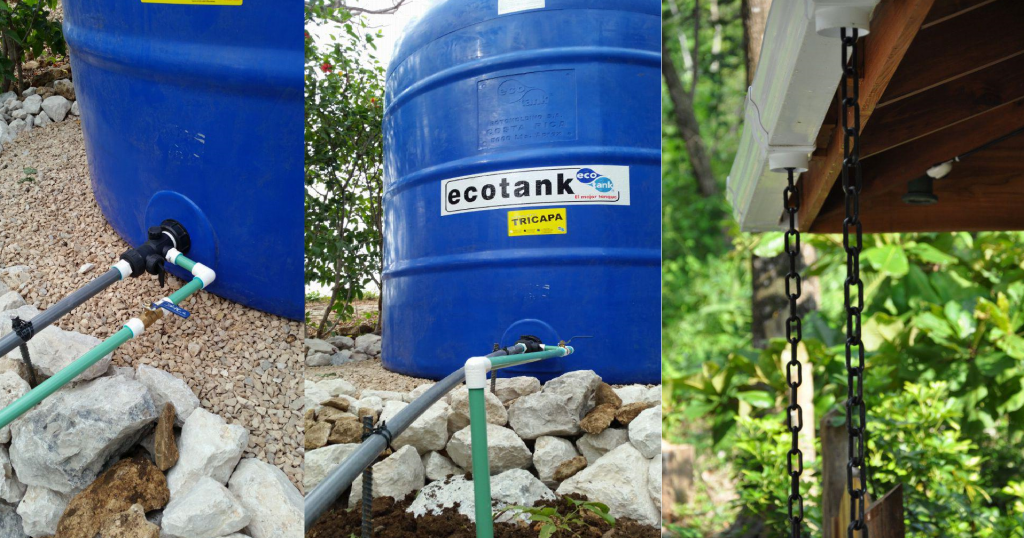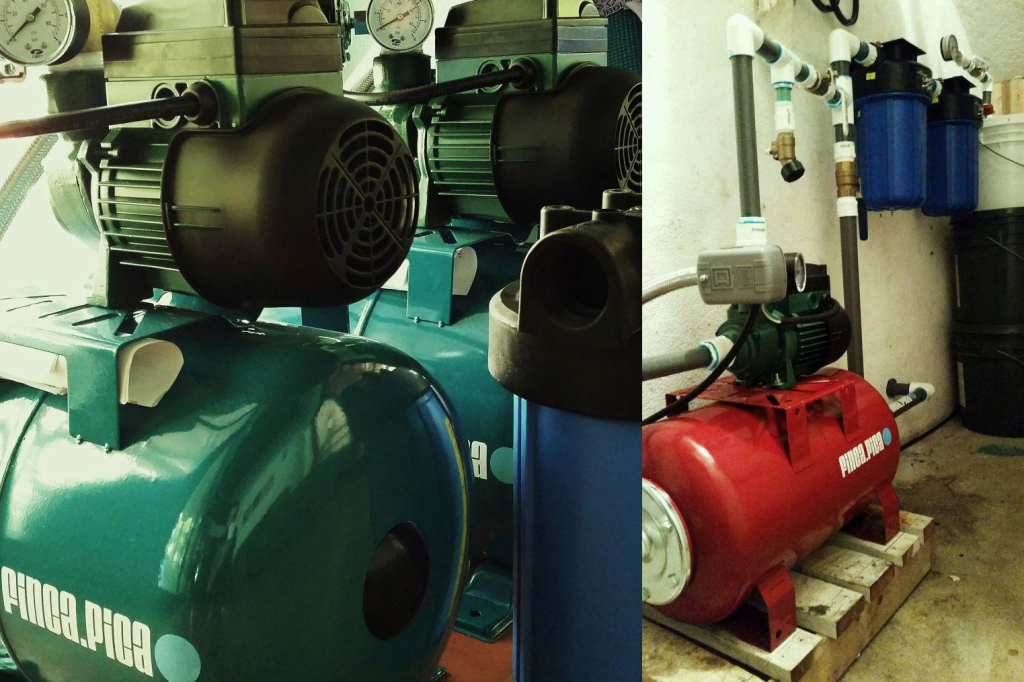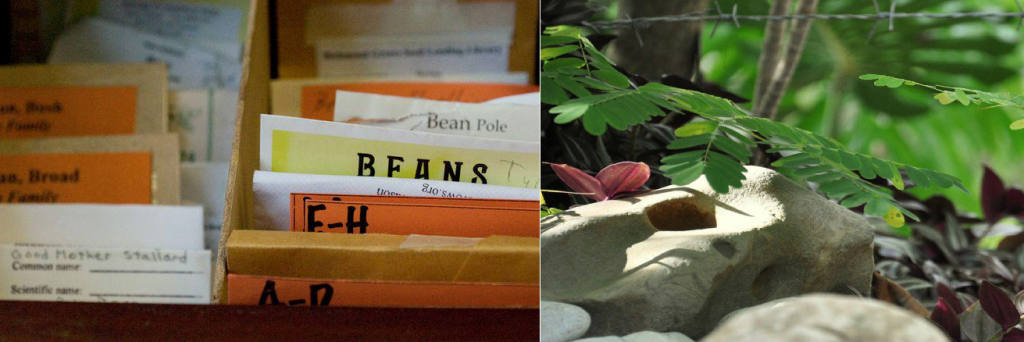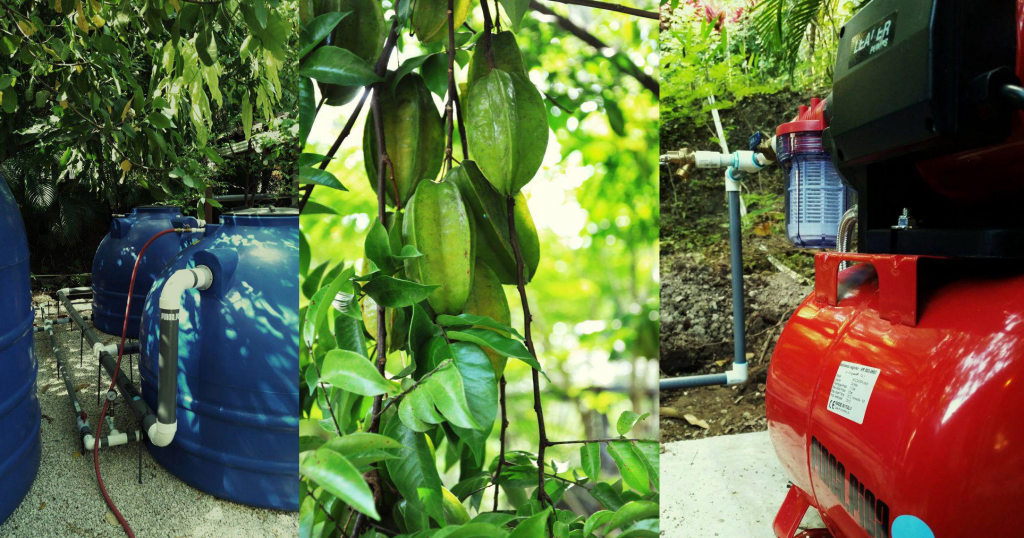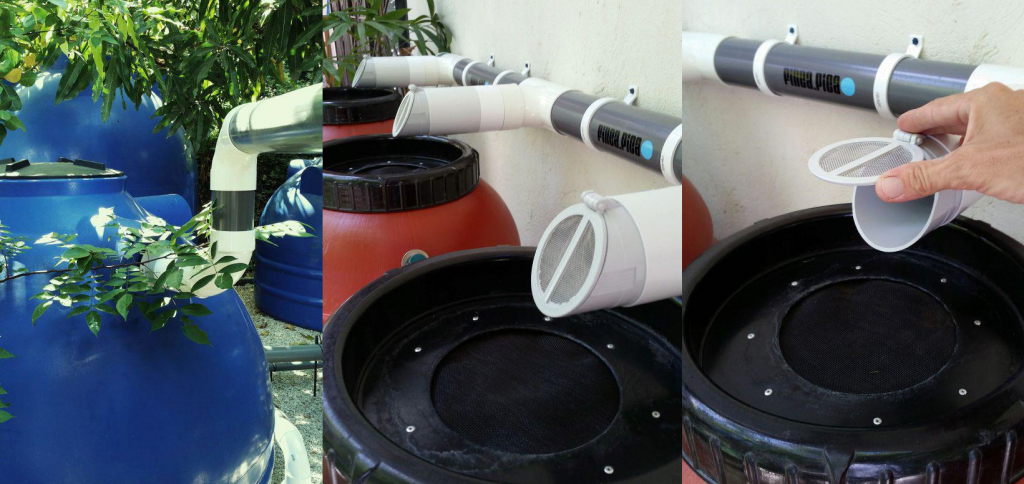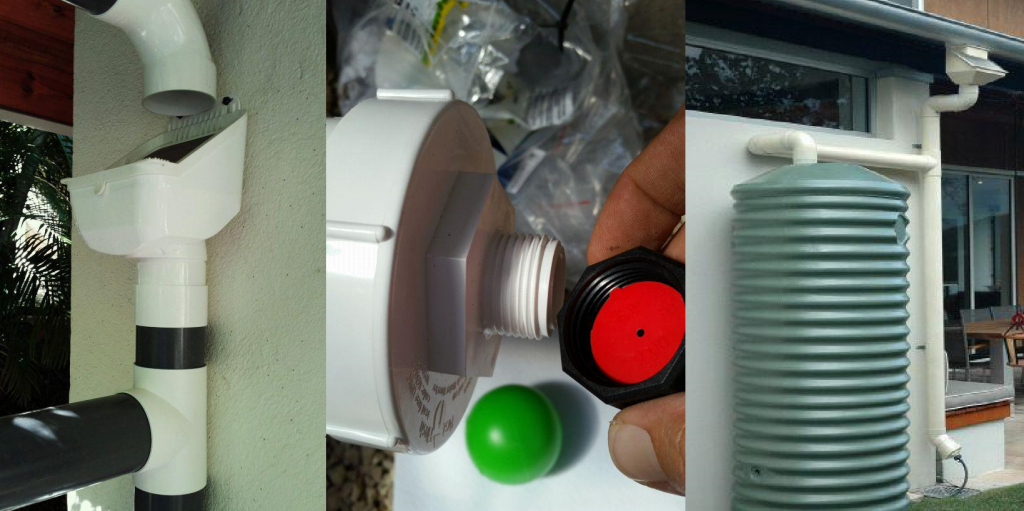What water shortages? One Nosara resident’s quest to prevent us going thirsty
- March 14, 2015
Despite what the brochures would have you believe, Costa Rica is not made up entirely of lush, tropical jungle. Nosara is located in the countries driest region – Guanacaste. September and October here witness torrential rain on a daily basis, and other than the odd downpour in the months proceeding September and October the rest of the year is drier than a camels flip flop. This creates pressing dilemmas for local water authorities, and often leaves residents subject to water shortages due to local businesses efforts to prevent tourists going unwashed and thirsty. Despite efforts from the local ASADA team that work hard – often in the face of overwhelming odds to meet Nosaras growing water needs, shortages are still a problem. Although professional engineering teams have assured residents that the necessary infrastructure is in place to keep Nosaras water flowing for decades, the water system still faces a number of problems including outdated tanks, fractured pipes and underfunded management. Many with close ties to the issue feel that Nosara has been neglected at both the regional and national level and have taken it upon themselves to take the necessary steps. One such person is Nick Mcalpin. Born in North Carolina, Nick and his wife moved to Nosara in 2008. The combination of a desire for an off the grid lifestyle, along with a yearning to do something he enjoyed while serving the needs of the community inspired Nick to focus his expertise on the impending water challenges Nosara faces. Nick began by installing rainwater catchment systems on his property in Nosaras L Section. After word of his achievements spread Nick experienced a wave of requests from local residents experiencing water issues and thus requesting similar technology to that which Nick had set up in his home. Nick began his
quest to help people out and so began the organic birth of ‘Finca Pica’. If further validation was needed concerning whether Nick made the correct business choice one need only look at his work schedule – which doesn’t contain an opening until some time after June 2015. Nosara Real Estate Report recently sat down with Nick to get the lowdown on the Nosara water situation, and discuss ways in which problems are being tackled.
NRER: So, I’ve heard you’ve been busy.
Nick: Slammed.
NRER: You’re building water systems around Nosara?
Nick: Yeah. The idea was to go into business primarily designing and building rainwater harvesting systems, and help people get started filtering their water supply, but with the constant pressure issues we’ve been having the last couple of years, I’ve been forced to focus mainly on tank and pump reserve systems.
NRER: Are you selling the tanks too, or just installing them?
Nick: No, we’re not selling tanks. We’re helping people get tanks at a discount. I’ve been working directly with la Casa del tanque in the Central Valley, which allows me to purchase tanks for about 40% of what they’re priced at locally. When several people need tanks at the same time i organize an order so everyone can split the transport costs. There’s no profit on the tanks themselves
.
NRER: So how do the reserve systems work?
Nick: For people worried primarily about complete outages, we’ll have a tank somewhere on the property being fed by a small line coming from the house’s main water supply. When the water goes out, the homeowner can close a valve to shut off the ASADA feed, and open a valve to allow the pump at the base of the tank to pressurize the house. If the tank’s big enough, the homeowner can generally run off the tank until the ASADA provides water again. For people in neighborhoods with chronic pressure issues, which is slowly becoming more common, we have the ASADA feed run directly into the tank, and a pump / pressure tank system receives water from the holding tank and sends it to the house. The idea is that even though there’s not enough water pressure for the house’s water system to function properly there is generally enough pressure to keep a tank full, even at a trickle. Generally, the tank level will do most of it’s catching up at night when demand is low.
NRER: Can’t people elevate tanks, and use the elevation for pressure?
NRER: And the water coming from the reserve tanks needs to be filtered?
Nick: I worry more at my house about what I’m putting in the tank, rather than what’s coming out. The tanks are a closed system – tight caps, screened vents, three layer polyethylene. Sunlight can’t even get in. I begin with the basic idea that ASADA water should always be filtered, period. The first thing ASADA water should come in contact with on your property is a filtering system. Clean water in the tanks, clean water out.
NRER: What are you so concerned with filtering out?
Nick: Sediment always comes first. We have a ton of sediment in the Nosara water supply. Sediment’s what sent me down the path of researching all the available filtering options for our house to start with. I guess i got tired of taking aerators off all the faucets and dumping sand and debris out every few days.
NRER: What comes after the sediment?
Nick: We have a filter house next to our meter with two 10″ canisters. The first is a 25 micron sediment filter, and the second is a 10 micron carbon filter for chlorine reduction, and taste and odor issues. Once the water leaves there we’re plumbed to run through a salt free conditioning unit that will arrive in a few weeks, and the last stage is a 50 GPD (gallons per day) reverse osmosis unit in our kitchen.
NRER: What’s the idea behind the conditioner and the reverse osmosis?
Nick: The conditioner is for the calcium scaling. I didn’t want a conventional softener that i would have to add piles of salt to every year and have to supply with electricity. The salt free conditioners simply crystallize the calcium particles so they can’t bind together. It’s like the calcium’s not there as far as your appliances and glass surfaces are concerned, but it’s still in the water for everyone arguing the whole blue zone thing. The reverse osmosis unit just filters the water to a ridiculously fine point, and then runs into a separate faucet i mounted in the sink for filling glass bottles. the conditioner will help the reverse osmosis unit, as does the carbon filter outside, and the additional carbon filter on the unit itself. Two of the worst things for an reverse osmosis membrane are calcium scaling and even the slightest bit of chlorine.
NRER Isn’t the whole reverse osmosis thing overkill?
Nick: I’ve seen loads of sediment come down the line after a break in the main. I’d imagine any diesel, gas, transmission fluid, etc. that may possibly leak from this fine fleet of automobiles we see on our roads and run into the ditch with the rains can’t be far behind. I’d rather be safe than sorry.
NRER: Where are the pressure issues and outages coming from?
Nick: Growth in the tourism sector and development out-pacing upgrades to the system.
NRER: Is that where the whole rainwater thing came from, the water outages?
Nick: I knew for a few years i wanted to have a rainwater system, and was starting to feel pressure to have a good reserve system in place after running out of water several times last dry season. Once i figured out how to make one system out of the two concepts, i got it done.
NRER: So your rainwater system doubles as a reserve system?
Nick: Yeah. basically, we have a 4200L tank used solely to store ASADA water, three 1950L tanks connected directly to the gutters in the back yard, a 1950L rain tank in the side yard, three 55 gallon olive barrels off the front porch, and another 55 gallon olive barrel we intend to use to catch a.c. condensation after we change out the side porch to a metal roof for solar. That’s a little over 8000L of capacity in the rainy season, and once we run the rain barrels empty during the dry season in the gardens, we can just fill them with ASADA water for emergency use. well over 12,000L of storage all together. The long-term plan is to start a storage system up on one of our hilltops so when the rain tanks around the house fill up early in the rainy season, we can cut the pump on and send all the water up top to storage, emptying the tanks and making room for more collecting. you do that a few times during the rainy season and you can start stock-piling serious amounts of water.
NRER: You could actually fill tanks several times?
Nick: When you start doing the math, it gets pretty crazy what’s possible. I always use a 1000 square foot roof as an example to keep it simple. a 1000 square foot roof will shed 640 gallons of water for every 1″ of rain that falls on it. Guanacaste, on average, receives about 117″ of rain during the wet months. From 117″ that same 1000 square foot roof will shed around 74,880 gallons of water. You start figuring in bodegas, greenhouses, bus stops, hardware stores, and everything else with a roof on it and Nosara’s collective rooftops probably shed more water each year than we actually consume as a community.
NRER: Could most people actually catch everything that’s coming off their roof?
Nick: No, the average homeowner would most likely only catch a fraction of what’s available due to the cost of the tanks, and the space available to add more tanks. This is just a small piece of a bigger puzzle. even if you’re only catching a couple thousand gallons a year, that’s water the ASADA didn’t have to pay I.C.E. outrageous fees to pump, and your plants will love you for it.
NRER: And the water’s clean?
Nick: With a well designed system, the water going into the tanks should be free of debris. At the end of our downspouts, just below the gutters, we have screened downspout diverters that help the system shed leaves and any other large debris that could clog up our first flush systems. The first flush system just below the diverters is a long tube that catches the initial water coming off your roof when a rainstorm rolls in. The initial water coming off your roof is the dirty stuff containing bird crap, mosquito eggs and dust that collects between storms. Once the first flush tube fills up with the dirty water, a plastic ball floats to the top, seals the first flush tube, and the clean water runs into the tanks. We also have screened overflow outlets so the insects can’t simply fly into the tank through the drain. After the rainstorm, the first flush tube slowly drains itself through a bleeder at the bottom, ready to go to work when the next storm arrives.
NRER: How much water has to be diverted?
Nick: Between 12.5 and 50 gallons per 1000 square foot of roof space being collected from., depending on the severity of local pollution. Our rooftops are fairly polluted once our dust problem is factored in, so i tend to figure Nosara at around 35 gallons per thousand, a little more with tile roofs, which are a whole issue unto themselves.
NRER: Does the first flush make the water drinkable?
Nick: No. the first flush makes sure the water is free of debris and isn’t a dengue factory. How far a homeowner takes water purification after that is strictly up to them, depending on what they intend to use to water for. We’re experimenting with ours now, and have a whole filter system dedicated solely to the rainwater. For irrigation, no further filtering is needed.
NRER: So is rainwater collection something the ASADA should be pursuing?
Nick: No. Rainwater collection is an individual choice. It’s one of multiple steps towards a homeowner’s individual water security, although it would be great to see a big rain tank sitting next to the ASADA building itself. It would be a strong message to the 11 or 12 people who actually show up during elections.
NRER: So what are some other steps people should be taking?
Nick: I know it may not be an option for folks close to the beach, or in the densely packed neighborhoods, but out where I’m at, the first step is putting in a well. I won’t argue publicly for or against actually permitting the thing. I think there are strong arguments on both sides of the conversation, but nothing will push you harder towards individual water security than finding and utilizing your own water source. A good well system and you most likely won’t even need an ASADA hook-up. Once you start adding raintanks around all your structures with rooftops, and utilizing grey water more efficiently you can really see the whole self-sufficient thing start to take shape.
NRER: What do you mean by utilizing grey water?
Nick: Grey water’s the stuff, for the most part, without all the nasty stuff mixed in – washing machine discharge, kitchen sinks, showers and tubs. A guy in Tucson named Brad Lancaster has the best setup ever in his laundry room. Instead of the washing machine discharge hose being jabbed into a pipe that makes it’s way to the septic system, he has a whole set of pipes, each one labeled with the name of a different fruit tree. Every time he washes clothes, you just stick the drain line into a different pipe, in essence watering a different tree every time you do laundry. Water from outdoor showers can be diverted to different plants in the same manner. With the right use of organic and non-toxic soaps, shampoos, and laundry detergents, most grey water can be sent directly to fruit trees and native plants, helping keep hillsides green and roots strong and ready to hold delicate soils in place when the first rains return, all with little or no additional water use.
NRER: What about the nasty stuff? The black water?
Nick: Black water in Nosara, until very recently, has been ignored as a source of water. Conventionally in this area, you flush the toilet, and the black water runs into a septic tank, where the anaerobic bacteria naturally found in your waste, breaks the waste down before it is allowed to leach into the ground. When it hits the ground it comes in contact with aerobic bacteria in the soil and breaks down completely over time. People are finally exploring the use of 2 and 3 tank aearated septic systems around town. The 1st tank is like normal where the anaerobic bacteria does it’s work. In the 2nd tank, a small aerator is used to introduce aerobic bacteria into the waste – kind of like the pump blowing bubbles in a fish aquarium. The aerobic bacteria from the pump can do the work much faster than would naturally occur in the soil, and treat the water to an almost drinkable quality. You can then use the water for irrigation. Imagine if every time you flushed the toilet, you were stabilizing hillside vegetation, rather than leaching waste into the ground.
NRER: Well, what about the neighborhoods near the beach and the more densely packed areas?
Nick: If i lived in one of the neighborhoods now experiencing chronic pressure issues, the first thing to do is get a reserve system. 25 pounds of pressure for several months straight, for me, just won’t cut it. I think it would be pretty smart for a lot of these neighborhoods to start working together for water security, much the same as they do for break-ins. In many of these neighborhoods where the pressure always struggles, you can find deep, heavy producing wells. I’ve seen wells down near the beach that would provide for 10 or 20 houses. I know you can’t legally sell your neighbors water, but a group of neighbors could definitely cooperate with each other to help improve their situation. If the entire neighborhood can’t be brought together, people could start on a 2, 3, or 4 house level and go from there. In the neighborhoods with the worst pressure issues, folks may want to consider getting together in groups, and collectively purchasing the last available lots near them, before they’re sold and built on, adding to the problem.
NRER: What about the ASADA problems as a whole, and the need to upgrade the system? What now?
Nick: There’s a small army of folks exploring every option available to try and get ahead of this issue. New wells are being drilled and tested. Alternate sources of water are being looked into. Broad funding is being lobbied for. The engineer’s plans have been submitted. If approved, this gives the ASADA some breathing room, and also helps them get out of the shadow of the whole voluntary rate system and move towards a more financially sustainable model. Does the planned overhaul of the system go far enough when you take into account per person water usage in the project? Probably not even close, but it gives us a starting point. A regional dialog has also been initiated in hopes that eventually the 6 or 7 sister ASADAs in our immediate area can begin to work together to solve problems, and in the long term, share water in times of crisis through a well integrated system. If the major obstacle we always run into is regulation, maybe we should start thinking on a national level and try to change what’s preventing the fixing of water issues. Helping keep everything up and running however does start on a local level. Its laughable to see everyone bitch about water issues on Nosara rant and rave facebook page, only to have 25 of us, out of 500 and some odd meters, actually show up to vote for who gets to run the show and interact with all these agencies.
NRER: So this won’t all just fix itself if we give it time?
Nick: No!
For more information contact Nick Macalpin at alwaysurf@gmail.com




